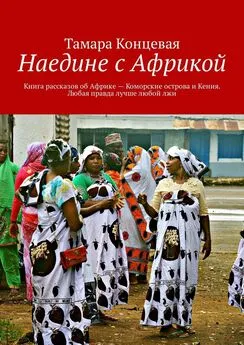Станислас Деан - Как мы учимся. Почему мозг учится лучше, чем любая машина… пока
- Название:Как мы учимся. Почему мозг учится лучше, чем любая машина… пока
- Автор:
- Жанр:
- Издательство:Эксмо
- Год:2021
- Город:Москва
- ISBN:978-5-04-113024-4
- Рейтинг:
- Избранное:Добавить в избранное
-
Отзывы:
-
Ваша оценка:
Станислас Деан - Как мы учимся. Почему мозг учится лучше, чем любая машина… пока краткое содержание
В формате PDF A4 сохранен издательский макет.
Как мы учимся. Почему мозг учится лучше, чем любая машина… пока - читать онлайн бесплатно ознакомительный отрывок
Интервал:
Закладка:
Dehaene, S., Izard, V., Spelke, E., & Pica, P. (2008). Log or linear? Distinct intuitions of the number scale in Western and Amazonian indigene cultures. Science , 320(5880), 1217–1220.
Dehaene, S., Jobert, A., Naccache, L., Ciuciu, P., Poline, J.-B., Le Bihan, D., & Cohen, L. (2004). Letter binding and invariant recognition of masked words: Behavioral and neuroimaging evidence. Psychological Science , 15(5), 307–313.
Dehaene, S., Kerszberg, M., & Changeux, J. P. (1998). A neuronal model of a global workspace in effortful cognitive tasks. Proceedings of the National Academy of Sciences , 95(24), 14529–14534.
Dehaene, S., Lau, H., & Kouider, S. (2017). What is consciousness, and could machines have it? Science , 358(6362), 486–492.
Dehaene, S., & Marques, J. F. (2002). Cognitive neuroscience: Scalar variability in price estimation and the cognitive consequences of switching to the euro. Q uarterly Journal of Experimental Psychology , 55(3), 705–731.
Dehaene, S., Meyniel, F., Wacongne, C., Wang, L., & Pallier, C. (2015). The neural representation of sequences: From transition probabilities to algebraic patterns and linguistic trees. Neuron , 88(1), 2–19.
Dehaene, S., & Naccache, L. (2001). Towards a cognitive neuroscience of consciousness: Basic evidence and a workspace framework. Cognition , 79(1–2), 1–37.
Dehaene, S., Naccache, L., Cohen, L., Le Bihan, D., Mangin, J.-F., Poline, J.-B., & Rivière, D. (2001). Cerebral mechanisms of word masking and unconscious repetition priming. Nature Neuroscience , 4(7), 752–758.
Dehaene, S., Pegado, F., Braga, L. W., Ventura, P., Nunes Filho, G., Jobert, A., Cohen, L. (2010). How learning to read changes the cortical networks for vision and language. Science , 330(6009), 1359–1364.
Dehaene-Lambertz, G., Dehaene, S., & Hertz-Pannier, L. (2002). Functional neuroimaging of speech perception in infants. Science , 298(5600), 2013–2015.
Dehaene-Lambertz, G., Hertz-Pannier, L., Dubois, J., Meriaux, S., Roche, A., Sigman, M., & Dehaene, S. (2006). Functional organization of perisylvian activation during presentation of sentences in preverbal infants. Proceedings of the National Academy of Sciences , 103(38), 14240–14245.
Dehaene-Lambertz, G., Monzalvo, K., & Dehaene, S. (2018). The emergence of the visual word form: Longitudinal evolution of category-specific ventral visual areas during reading acquisition. PLOS Biology , 16(3), e2004103.
Dehaene-Lambertz, G., & Spelke, E. S. (2015). The infancy of the human brain. Neuron , 88(1), 93–109.
de Lavilléon, G., Lacroix, M. M., Rondi-Reig, L., & Benchenane, K. (2015). Explicit memory creation during sleep demonstrates a causal role of place cells in navigation. Natura Neuroscience , 18(4), 493–495.
Denison, S., & Xu, F. (2010). Integrating physical constraints in statistical inference by 11-month-old infants. Cognitive Science , 34(5), 885–908.
Dennett, D. C. (1995). Darwin’s dangerous idea: Evolution and the meanings of life . New York, NY: Simon and Schuster.
Desimone, R., & Duncan, J. (1995). Neural mechanisms of selective visual attention. Annual Review of Neuroscience , 18, 193–222.
D’Esposito, M., & Grossman, M. (1996). The physiological basis of executive function and working memory. Neuroscientist , 2(6), 345–352.
Diamond, A., & Doar, B. (1989). The performance of human infants on a measure of frontal cortex function, the delayed response task. Developmental Psychobiology , 22(3), 271–294.
Diamond, A., & Goldman-Rakic, P. S. (1989). Comparison of human infants and rhesus monkeys on Piaget’s AB task: Evidence for dependence on dorsolateral prefrontal cortex. Experimental Brain Research , 74(1), 24–40.
Diamond, A., & Lee, K. (2011). Interventions shown to aid executive function development in children 4 to 12 years old. Science , 333(6045), 959–964.
Diekelmann, S., & Born, J. (2010). The memory function of sleep. Nature Reviews Neuroscience, 11(2), 114–126.
Diester, I., & Nieder, A. (2007). Semantic associations between signs and numerical categories in the prefrontal cortex. PLOS Biology , 5(11), e294.
Diester, I., & Nieder, A. (2010). Numerical values leave a semantic imprint on associated signs in monkeys. Journal of Cognitive Neuroscience , 22(1), 174– 183.
Ditz, H. M., & Nieder, A. (2015). Neurons selective to the number of visual items in the corvid songbird endbrain. Proceedings of the National Academy of Sciences , 112(25), 7827–7832.
Doeller, C. F., Barry, C., & Burgess, N. (2010). Evidence for grid cells in a human memory network. Nature , 463(7281), 657–661.
Donato, F., Rompani, S. B., & Caroni, P. (2013). Parvalbumin-expressing basket-cell network plasticity induced by experience regulates adult learning. Nature , 504(7479), 272–276.
Draganski, B., Gaser, C., Busch, V., Schuierer, G., Bogdahn, U., & May, A. (2004). Neuroplasticity: Changes in grey matter induced by training. Nature , 427(6972), 311–312.
Dubois, J., Dehaene-Lambertz, G., Perrin, M., Mangin, J.-F., Cointepas, Y., Duchesnay, E., … Hertz-Pannier, L. (2007). Asynchrony of the early maturation of white matter bundles in healthy infants: Quantitative landmarks revealed noninvasively by diffusion tensor imaging. Human Brain Mapping , 29, 14–27.
Dubois, J., Hertz-Pannier, L., Cachia, A., Mangin, J.-F., Le Bihan, D., & Dehaene-Lambertz, G. (2009). Structural asymmetries in the infant language and sensori-motor networks. Cerebral Cortex, 19(2), 414–423.
Dubois, J., Poupon, C., Thirion, B., Simonnet, H., Kulikova, S., Leroy, F., … Dehaene– Lambertz, G. (2015). Exploring the early organization and maturation of linguistic pathways in the human infant brain. Cerebral Cortex , 26(5), 2283–2298.
Dumontheil, I., & Klingberg, T. (2011). Brain activity during a visuospatial working memory task predicts arithmetical performance 2 years later. Cerebral Cortex , 22(5), 1078–1085.
Duncan, J. (2003). Intelligence tests predict brain response to demanding task events. Nature Neuroscience , 6(3), 207–208.
Duncan, J. (2010). The multiple-demand (MD) system of the prima e brain: Mental programs for intelligent behaviour. Trends in Cognitive Sciences , 14(4), 172–179.
Duncan, J. (2013). The structure of cognition: Attentional episodes in mind and brain. Neuron , 80(1), 35–50.
Dundas, E. M., Plaut, D. C., & Behrmann, M. (2013). The joint development of hemispheric lateralization for words and faces. Journal of Experimental Psychology: General , 142(2), 348–358.
Dunlosky, J., Rawson, K. A., Marsh, E. J., Nathan, M. J., & Willingham, D. T. (2013). Improving students’ learning with effective learning techniques: Promising directions from cognitive and educational psychology. Psychological Science in the Public Interest , 14(1), 4–58.
Dunster, G. P., Iglesia, L. de la, Ben-Hamo, M., Nave, C., Fleischer, J. G., Panda, S., & Iglesia, H. O. de la. (2018). Sleepmore in Seattle: Later school start times are associated with more sleep and better performance in high school students. Science Advances , 4(12), eaau6200.
Duyme, M., Dumaret, A.-C., & Tomkiewicz, S. (1999). How can we boost IQs of «dull children»? A late adoption study. Proceedings of the National Academy of Sciences , 96(15), 8790–8794.
Dweck, C. S. (2006). Mindset: The new psychology of success . New York, NY: Random House.
Egyed, K., Király, I., & Gergely, G. (2013). Communicating shared knowledge in infancy. Psychological Science , 24(7), 1348–1353.
Ehri, L. C., Nunes, S. R., Stahl, S. A., & Willows, D. M. (2001). Systematic phonics instruction helps students learn to read: Evidence from the National Reading Panel’s meta-analysis. Review of Educational Research , 71(3), 393–447.
Ellis, A. W., & Lambon Ralph, M. A. (2000). Age of acquisition effects in adult lexical processing reflect loss of plasticity in maturing systems: Insights from connectionist networks. Journal of Experimental Psychology: Learning, Memory, and Cognition , 26(5), 1103–1123.
Elman, J. L., Bates, E. A., Johnson, M. H., Karmiloff-Smith, A., Parisi, D., & Plunkett, K. (1996). Rethinking innateness: A connectionist perspective on development . Cambridge, MA: MIT Press.
Elsayed, G. F., Shankar, S., Cheung, B., Papernot, N., Kurakin, A., Goodfellow, I., & Sohl-Dickstein, J. (2018). Adversarial examples that fool both human and computer vision. https://arxiv.org/abs/1802.08195v1.
Elston, G. N. (2003). Cortex, cognition and the cell: New insights into the pyramidal neuron and prefrontal function. Cerebral Cortex , 13(11), 1124–1138.
Emmons, W. H., & Simon, C. W. (1956). The non-recall of material presented during sleep. The American Journal of Psychology , 69, 76–81.
Epelbaum, M., Milleret, C., Buisseret, P., & Duffer, J. L. (1993). The sensitive period for strabismic amblyopia in humans. Ophthalmology, 100(3), 323–327.
Esseily, R., Rat-Fischer, L., Somogyi, E., O’Regan, K. J., & Fagard, J. (2016). Humour production may enhance observational learning of a new tool-use action in 18-month-old infants. Cognition and Emotion , 30(4), 817–825.
Ester, E. F., Sprague, T. C., & Serences, J. T. (2015). Parietal and frontal cortex encode stimulus-specific mnemonic representations during visual working memory. Neuron , 87(4), 893–905.
Everaert, M. B. H., Huybregts, M. A. C., Chomsky, N., Berwick, R. C., & Bolhuis, J. J. (2015). Structures, not strings: Linguistics as part of the cognitive sciences. Trends in Cognitive Sciences , 19(12), 729–743.
Fanselow, M. S. (1998). Pavlovian conditioning, negative feedback, and blocking: Mechanisms that regulate association formation. Neuron , 20(4), 625–627.
Fattal, I., Friedmann, N., & Fattal-Valevski, A. (2011). The crucial role of thiamine in the development of syntax and lexical retrieval: A study of infantile thiamine deficiency. Brain , 134(6), 1720–1739.
Fawcett, S. L., Wang, Y.-Z., & Birch, E. E. (2005). The critical period for susceptibility of human stereopsis. Investigative Ophthalmology and Visual Science , 46(2), 521–525.
Fischer, M. H. (2003). Cognitive representation of negative numbers. Psychological Science , 14(3), 278–282.
Fisher, A. V., Godwin, K. E., & Seltman, H. (2014). Visual environment, attention allocation, and learning in young children when too much of a good thing may be bad. Psychological Science , 25(7), 1362–1370.
Fitzgerald, J. K., Freedman, D. J., Fanini, A., Bennur, S., Gold, J. I., & Assad, J. A. (2013). Biased associative representations in parietal cortex. Neuron , 77(1), 180–191.
Fitzsimonds, R. M., Song, H.-J., & Poo, M.-M. (1997). Propagation of activity-dependent synaptic depression in simple neural networks. Nature , 388(6641), 439–448.
Flechsig, P. (1876). Die Leitungsbahnen im Gehirn und Rückenmark des Menschen auf Grund Entwickelungsgeschichtlicher Untersuchungen . Leipzig: Engelmann.
Flege, J. E., Munro, M. J., & MacKay, I. R. (1995). Factors affecting strength of perceived foreign accent in a second language. Journal of the Acoustical Society of America , 97(5), 3125–3134.
Fleming, S. M., Weil, R. S., Nagy, Z., Dolan, R. J., & Rees, G. (2010). Relating introspective accuracy to individual differences in brain structure. Science , 329(5998), 1541–1543.
Читать дальшеИнтервал:
Закладка:





![Кэролайн Уилльямс - Мой продуктивный мозг [Как я проверила на себе лучшие методики саморазвития и что из этого вышло]](/books/1096012/kerolajn-uillyams-moj-produktivnyj-mozg-kak-ya-pro.webp)




